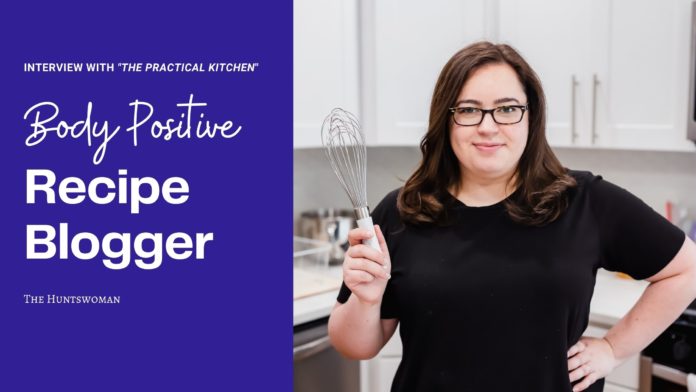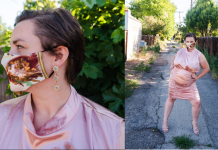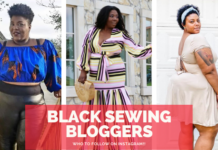Hey there! This post contains affiliate links. Using my links means I earn a commission, which helps me create more rad content. More on affiliates here.
Today on the blog, I’m going to share where to go to find body positive recipes that are fun to cook – and easy to follow!
AAAAAND, to do that, I’m going to share this interview Rebecca Eisenberg, a food dynamo who only writes and published body positive recipes on her food blog, “The Practical Kitchen.”
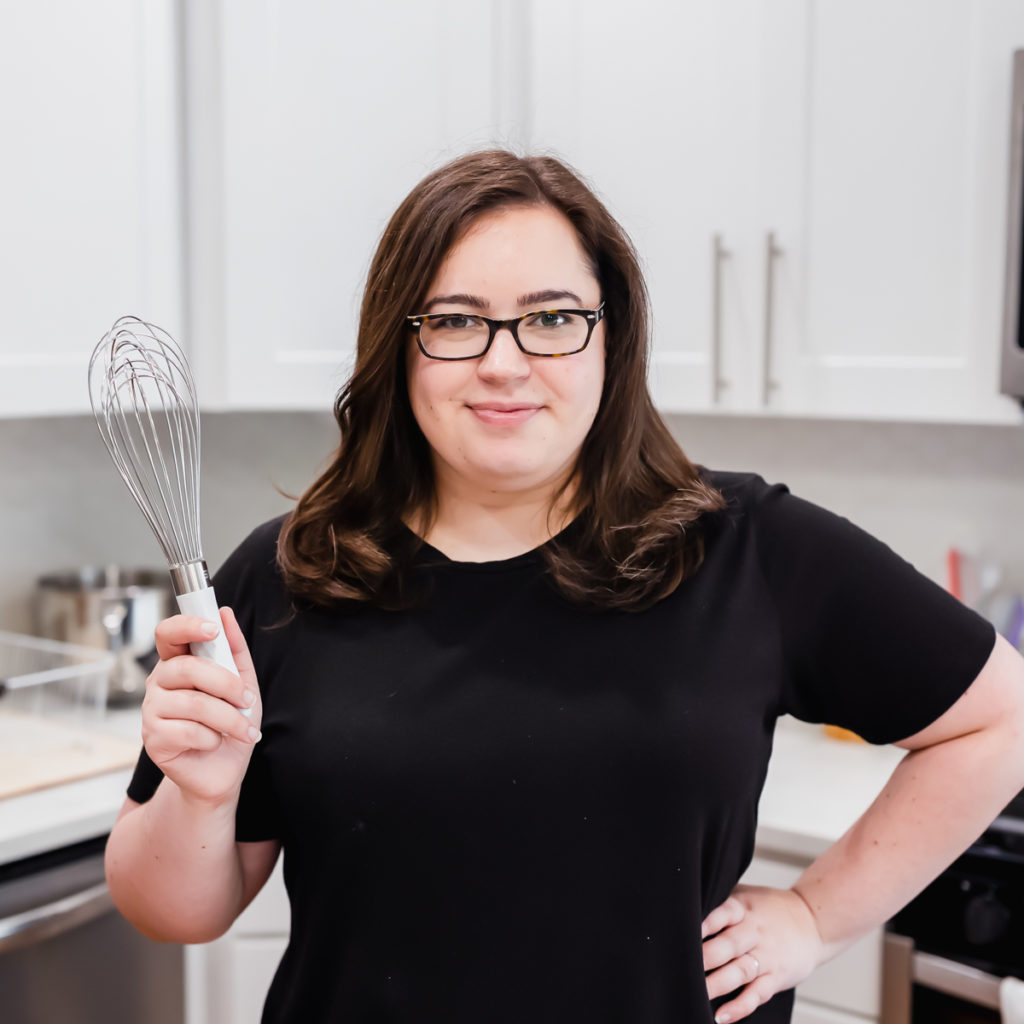
Body Positive Recipes
Now, real talk, I’m not into cooking. But *I* do love to talk about food, eat food and have fun with food.
I love eating food, lol. I love going to new restaurants, trying new food and learning about new cultures through food! Many of my very best friends love cooking, cookbooks, trying new recipes, etc.
From my besties, I know that BIG BIG BIIIIG problem is that a lot of food bloggers and recipe writers are *not* politically body positive. When looking for a recipe for a German chocolate cake or, heck, WAFFLES, it can feel like an emotional minefield.
A lot of food bloggers and recipe writers are *not* politically body positive.
It is hard to find body positive recipes [politically body positive recipes] and food blogs.
Enter Rebecca [she/her], a body positive recipe writer and food blogger!
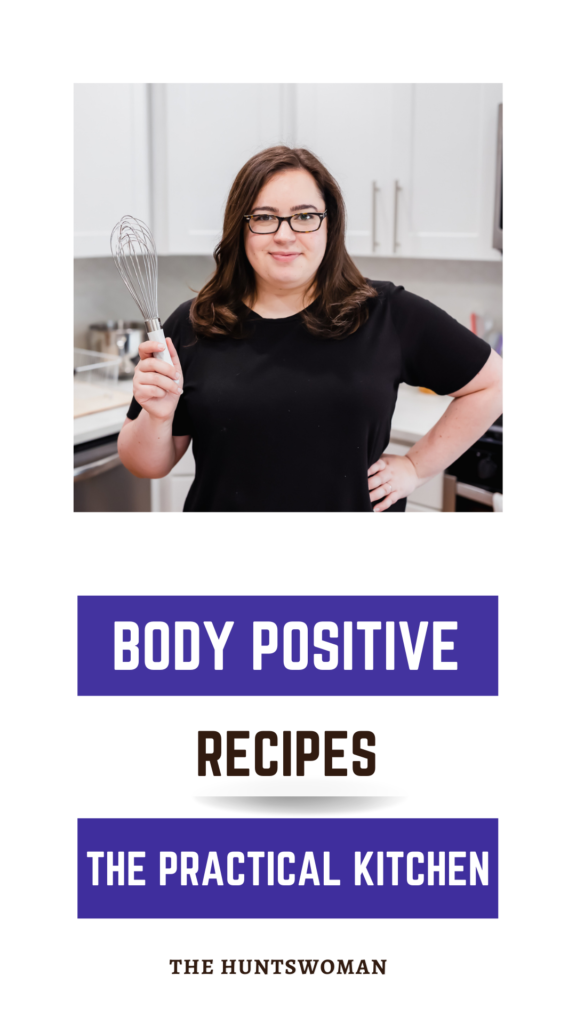
Where We’re Headed – Body Positive Recipes
In this blog post, I’ve interviewed Rebecca about her journey as a plus size chef, recipe writer + tester, food writer and blogger!
It’s my hope that this blog post acts as super helpful resource for folks who are looking for:
- Body positive recipes
- Recipes and advice to learn how to cook easy recipes [and the tools needed]
- A funny and fun food blogger who has high integrity and shares super honest reviews
Alrighty, let’s get started!
Time to learn about what goes into making body positive recipes!
25 Body Positive Recipes
Before we get started, I wanted to first share a list of 25 bodv positive recipes! Check out these fun recipes if you’re looking for recipes that celebrate the joy of cooking – and eating!
- Really Good Turkey Burgers
- Homemade Stand Mixer Butter
- Roasted Asparagus with Garlic and Soy Sauce
- Poutine Pizza
- Pantry Pesto with Dried Basil
- Tuna Newberg
- Fried Egg with Perfectly Runny Yolk
- Roasted Garlic Olive Oil Ciabatta
- Tikka Masala Pierogi
- One-Skillet Cacio e Pepe
- Simple 6 Ingredient Banana Bread
- Green Spaghetti Sauce
- Easy Homemade Bagels
- Charcuterie Board Pizza
- Soft Sourdough Beer Pretzels
- Easy Overnight Focaccia
- Orange Cardamom Chocolate Chip Ice Cream
- Pear & Gruyere Tart
- Soothing Broth for a Sore Throat
- Homemade Blueberry Bagels
- Toasted Hazelnut Chocolate Chip Muffins
- Pumpkin Gingerbread Loaf Cake
- Crispy Meringue Oven S’mores
- Snickerdoodle Chocolate Chip Cookies
- Mini Loaf Pan Focaccia
BH: Why did you decide to start a food and body positive recipe blog?
RE: I worked from home for 5 and a half years (before it was cool/a by product of the global panorama) and cooking and baking had become somewhat of a hobby.
Bread making in particular, with its long rise times, gave me checkpoints throughout the day where I had to get up from my desk and take breaks. Given that my background is in digital media and journalism, so many people in my life kept telling me, “Oh, you should start a food blog.” But following recipes is so different from creating them! And I was wary of monetizing a hobby.
“Oh, you should start a food blog.”
Buuuuuut… when I left my full time job and began freelancing, I had some extra time on my hands. And I started to realize I was interested in pursuing roles in food media.
So I started my body positive recipe blog, The Practical Kitchen, both as a way to give myself a creative outlet and to see if recipe development and writing about food was even something I liked doing. I also needed a space to experiment with my voice and find my perspective on food writing and to figure out what I could add to the conversation.
I figured not only would the food blog be something fun I could work on that was 100% mine, and that I could potentially monetize at some point, but, if nothing else, would be a great portfolio as I applied to jobs in food media.
I also needed a space to experiment with my voice and find my perspective on food writing and to figure out what I could add to the conversation. I knew that no matter what my niche or focus ended up being, it was important to me to carve out a space that was about celebrating the joy of food without participating in diet culture. I wanted a space to talk about food that didn’t assume everyone reading was trying to lose weight or that the calories or nutritional value of food had to be a consideration when choosing a recipe to make.
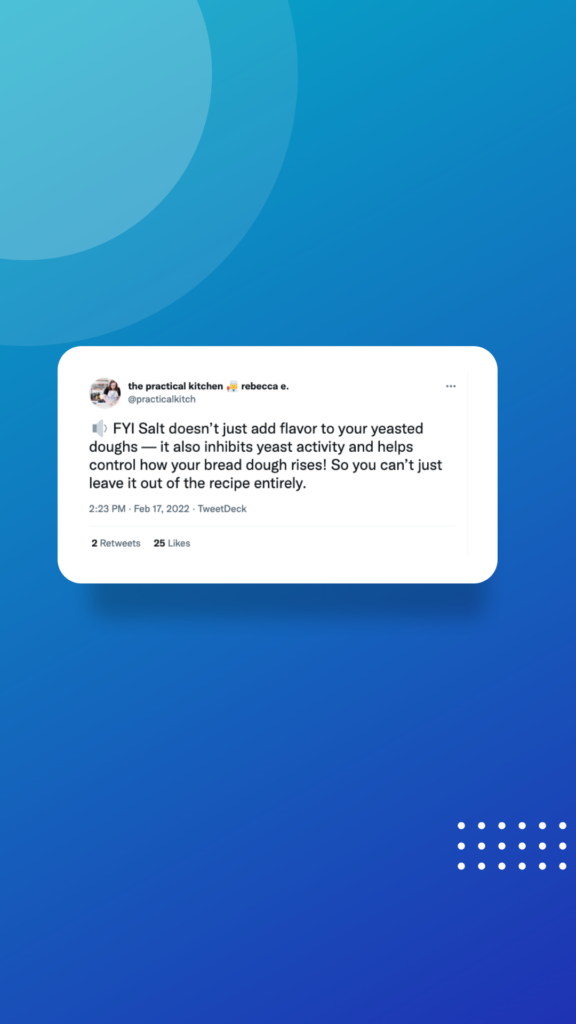
– The Practical Kitchen on Twitter
BH: I love this!! Never do something for one reason!” is one of my favorite pieces of advice – and you did that here!
Ok, now that we’ve talked a bit about how The Practical Kitchen came to be, can you share what “body positive” means in the context of a “body positive recipe“?
RE: It’s honestly not my favorite phrase.
I use it more as a shorthand for people outside of the fat positive/ fat politics/ fat acceptance space. Embracing “body positivity” has become very trendy in the past few years, so it’s something people are familiar with already. I find it to be a helpful phrase to quickly explain to someone that I don’t talk about food in the context of health or w3ight loss. My preference is to use more phrases like “body neutrality” “fat positive” “and fat acceptance” as my politics run more closely toward those frameworks.
My preference is to use more phrases like “body neutrality” “fat positive” “and fat acceptance.”
Anti-fatness won’t be solved by individuals learning to love their bodies or feel neutral about their bodies or even just rejecting diet culture — solving the harms caused by anti-fatness requires systemic change on a structural level. Aubrey Gordon had a great Twitter thread about this, and it’s something I keep in mind whenever I’m creating content.
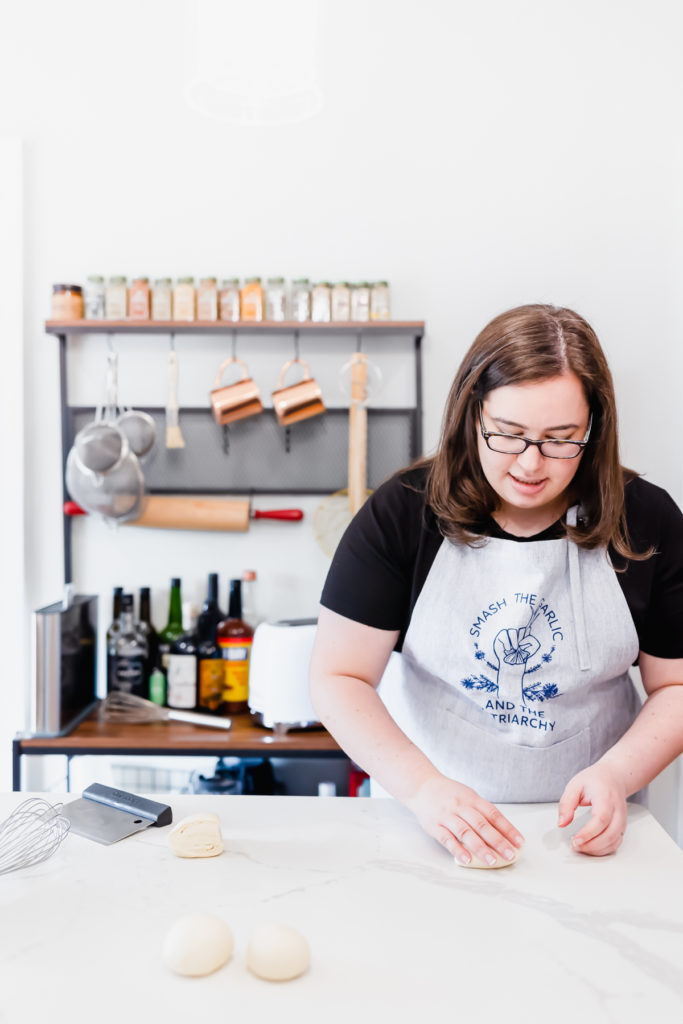
Plus Size Chef Coats & Aprons for Fat Folks | Body Positive Clothing
RE: For example, I do a lot of kitchen and food gift guides and product roundups, and I try to only include clothing that is available at least to a 5X if not larger. And if I’m looking at any products that need to be load bearing, like stools, chairs, etc., I always try to find ones that can carry at least 500 lbs.
For shoes I always look to recommend ones that also come in wide width. As someone who has been thin but is on the “small fat” side of the spectrum, I’m aware that I have a certain level of privilege and take great care to try to always think of how the things I’m recommending would work for superfat and infinifat people.
And when I talk about body positivity, I’m not just talking about weight — I’m also talking about the intersections of disability, race, gender, etc. And I always try to bring that kind of inclusive perspective to my food writing.
There are a lot of different ways to crack an egg.
For example: There are a lot of different ways to crack an egg. I recommend using your hands as it’s fastest. But there’s nothing wrong with using an egg separator if you have texture sensitivity and don’t want to use your hands, or if you have arthritis and can’t comfortably curl your fingers to let the whites slide away from the yolk.
BH: I so appreciate this background! How do you go about avoiding moralizing food or diet talk on your blog?
RE: I have a list of phrases I’ll never use to describe food, including:
- Good for you
- Healthy
- Light
- Indulgent
- Guilty pleasure
- Unhealthy
- etc
If I’m calling a recipe “good” that means it tastes good! You’re never going to find me suggesting you eat one recipe instead of another or that you’ll “have to go to the gym after this one”!
If I’m calling a recipe “good” that means it tastes good!
Accessibility & Body Positive Recipes
When it comes to talking about things that come close to diet talk — like recipes that are vegetarian, vegan, dairy-free, gluten-free, etc — I talk about them mostly in terms of accessibility and how cool it is that you and your dairy-free friend (or you and your non-dairy free friend!) can both enjoy these recipes without having to make changes, rather than talking about them in any way that would imply there’s something inherently “healthy” or “better” about them.
A lot of food blogs include nutritional information in their recipe cards. I don’t do this.
I’m not a nutritionist, I’m not a dietician, and I don’t know how to properly calculate that information, nor do I trust online nutritional calculators to do it for me. If it’s something that’s important to a reader on my site, they can do the calculations themselves. But I don’t want that information on my recipe cards where it might be triggering to someone trying to heal their relationship with food and extract themselves from diet culture.
Recipe Blogging “Best Practices”
Including nutritional information is something Google (and many SEO coaches/experts) encourage, by the way, and I hate it. When I first started food blogging I would get all these warnings from Google Search Console telling me I was missing information because I didn’t include calorie counts and that it might hurt my recipes’ search performance.
It turns out that’s just a “warning” email and that not including it doesn’t actually affect your ranking, but that Google is just trying to let you know that people might be more likely to click on your recipe if they know it has that information. But so many bloggers include it because they think they have to! And they don’t!
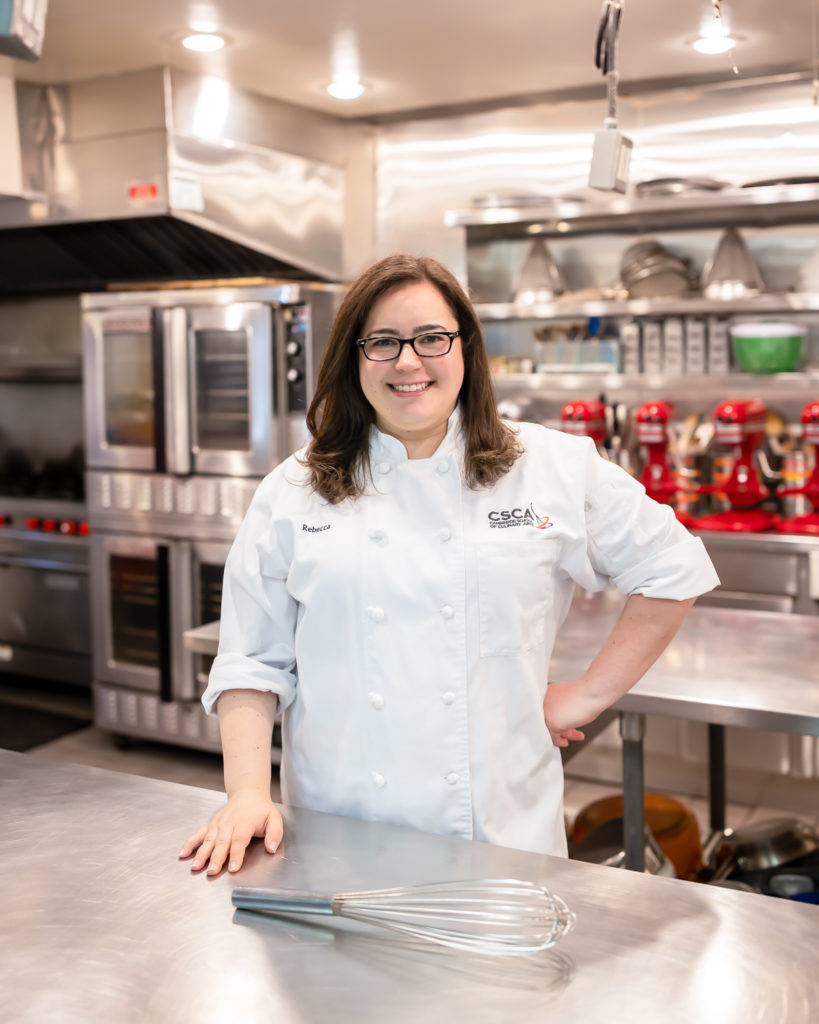
<< Love interviews like this? Be sure to join my email list, where I share interviews with plus size + body positive folks! Click here to subscribe! >>
BH: I love this! I have made similar decisions on The Huntswoman, because part of body positivity, to me, is “leaving money on the table” in a sense.
Next question! How does writing a body positive recipe work?
RE: When I’m recipe developing I think of the ingredients more in terms of chemical reactions and what they contribute to a dish.
If I’m going to make a change to a recipe that could be perceived as a “healthy” swap — e.g. oil instead of butter — I’m not going to call it out as being a healthy swap because that’s just not how I think of it. I’m going to explain why oil is a better choice for getting the results you want from the recipe. And vice versa!
If plain white granulated sugar is the best ingredient for a recipe, that doesn’t always mean you can just sub in something that’s perceived to be “healthier” and still have the recipe work. For example, in baking, creaming granulated sugar and butter together creates air pockets that leaven cakes and cookies. Honey doesn’t have all the granules that sugar does to create the same kind of aeration.
But I’m always going to explain these ingredient choices in terms of why they will or won’t give you the specific results you’re looking for. I don’t make recipe testing decisions in terms of perceived health benefits of certain ingredients. And I’m never going to explain them that way.
BH: This is such a stellar approach. What’s the process, or steps, to create a recipe?
RE: I have a lot of different processes, depending on where the idea for the recipe came from and what I’m starting with. A lot of recipes are formulas and ratios, and with a lot of recipes there are a lot of different ways to do something and get similar results.
So recipe testing is about pairing the right ratio of ingredients with the right process to get a very specific result.
So recipe testing is about pairing the right ratio of ingredients with the right process to get a very specific result.
I tend to either start with the most complicated or the most simple version of a recipe idea and then, through testing, either simplify it, or add any additional necessary steps to get the results I’m looking for.
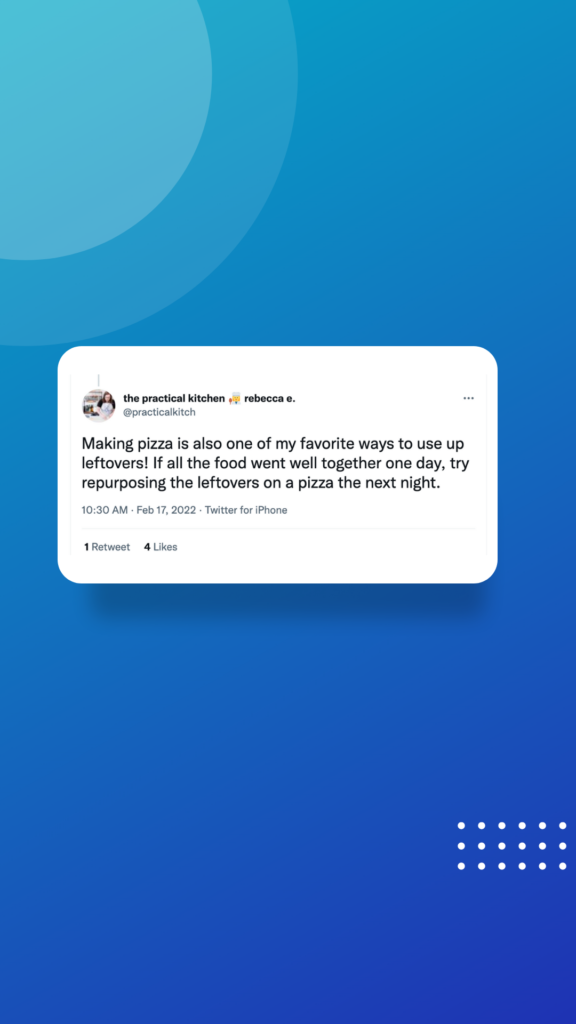
– The Practical Kitchen on Twitter
Body Positive Recipe Testing
As I’m testing I make notes about what certain stages of the recipe might look like, how long certain steps take, and try to anticipate questions people might have if it’s their first time trying it.
Once I’ve figured out the right combination of ingredients and process, I write a very bare bones version of the recipe to see how short I can get it. And then I go back through and flesh it out, adding in tips and visual cues to help guide people confidently from one step to the next.
I use those notes from earlier rounds of testing to also help explain what will happen if you skip certain steps or try to shortcut things. Some steps might be forgiving, but if I know there’s a step that will cause the final product to be very different if done incorrectly, I try to take care to explain what will happen so people know I’m not just being particular for no reason — I’m trying to save their bake!
I’m not just being particular for no reason — I’m trying to save their bake!
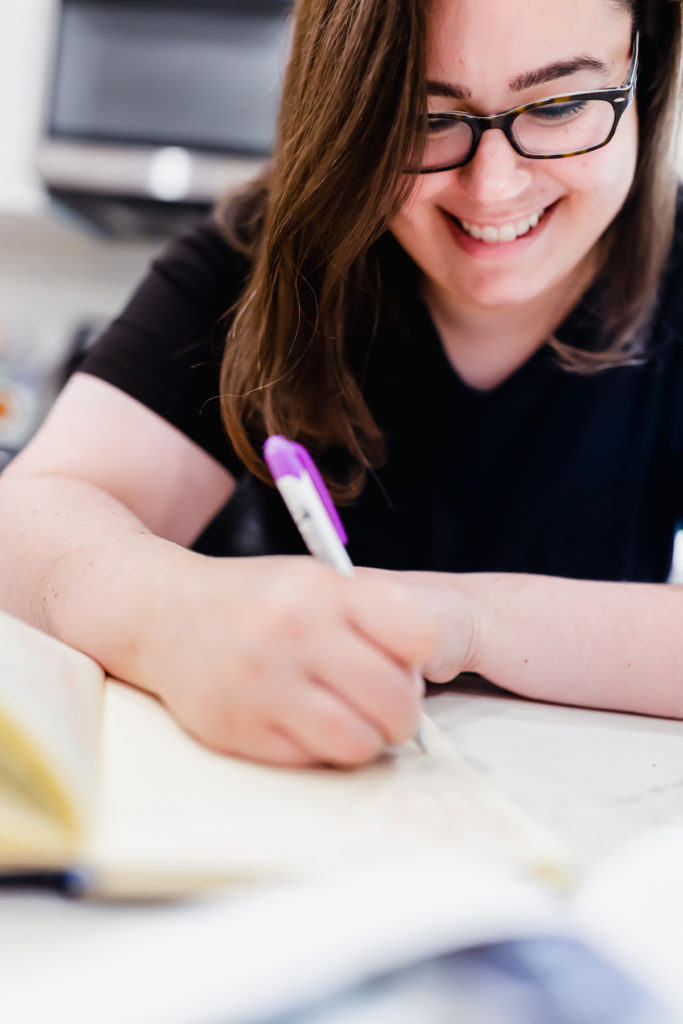
BH: This is fascinating – this is similar to how I design fashion garments!
BH: Next question! I and a lot of my readers have ADHD. You’ve written before about how you organize your kitchen for your ADHD brain — are there other ways your ADHD factors into your recipe writing process?
RE: Oh absolutely. I’ve noticed that when I try to follow recipes that aren’t written for neurodivergent brains I sometimes struggle with things like:
- Keeping track of how many times I’ve done a certain repetitive step, Parsing out the specific meaning of an instruction that might be obvious to everyone else, but that I Have Questions about.
- I tend to take instructions quite literally, and sometimes that can trip me up!
So when I write my recipes, I try to anticipate any confusion neurodivergent people might have and write as clearly as possible, even if it means my recipes are a bit longer. A lot of recipe outlets have a rule of thumb that “shorter is better,” the theory being that long recipes look intimidating even if they’re actually quite easy. I would rather have slightly longer, but very clear recipes, even for something as simple as frying an egg.
I would rather have slightly longer, but very clear recipes, even for something as simple
My goal is always for people to feel confident as they move from step to step and that means being real about steps that are messy, steps that are tricky, and how to troubleshoot or keep track of things along the way.
BH: Thank you for those helpful tips! Are there other body positive recipe writers and foodies that readers should follow?
These two are both great about taking care to write about food and recipes in a way that doesn’t perpetuate diet culture and trying to keep their comments sections free of diet talk and body shaming language.
BH: Thank you for these rad body positive recipe recs! Ok – fun question – If you had $1000 right now to buy a new kitchen gadget, what would you get?
RE: The Breville Smart Scoop Ice Cream Maker ($499). I borrowed one from my friend Emily (@100daysofpasta) last summer and it was so much fun to use. It’s self-chilling which means you can go from plugging it in to having freshly made ice cream in about an hour, even on a very hot day!
Most ice cream makers have a bowl that needs to be frozen at least 12 hours before you plan to make ice cream, and I just don’t have that kind of freezer space or time management skills.
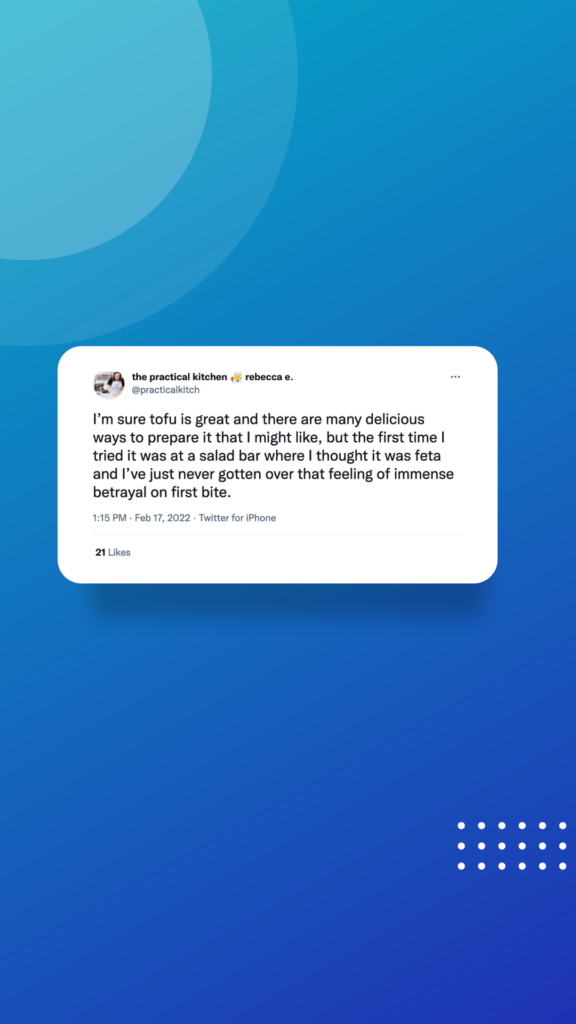
– The Practical Kitchen on Twitter
BH: ADHD kitchen gadget realness! Here for it! What’s one of the things that surprised you about being a body positive recipe blogger?
RE: Honestly? How wonderfully receptive most people have been to it. I really braced myself for getting a lot of hate or concern trolling, and I guard my comments section carefully. But for the most part people have been really supportive and great.
I really love the community I’ve built, and my readers are great about respecting and helping enforce the “no diet talk” comment policy.
BH: Tell me about taking photos for your blog! How much time and energy goes into taking photos for one recipe?
RE: It’s A LOT of work. When I first started my recipe blog I’d try to shoot photos of my actual meals as I was making them or before eating them for dinner. I very quickly realised how absolutely impossible that is.
I very quickly realised how absolutely impossible that is
Now most of my cooking for the blog is done in the morning or afternoon, and my husband and I are just used to eating cold or reheated meals at dinnertime.
For each recipe, I:
- Take a shot of the ingredients measured out into bowls
- Take a few process shots, especially if there are any tricky or hard-to-describe techniques,
- Take styled photos of the finished recipe. These take a lot of time!
The ingredient shots are something I’ve added more recently and people seem to really like them, but they take a ton of time. When I’m cooking or baking just for myself, I can measure things directly into mixing bowls and start working. But when I need to stop and measure every ingredient into an individual bowl, there’s a lot to think about — and a lot more dishes to do!
My photo studio is a little room at the opposite end of my apartment from my kitchen, so getting process shots means carrying ingredients in progress up and down the hallway from the kitchen to the studio, since I can’t necessarily do all of the cooking or baking assembly steps in my studio.
Shooting the finished dish or pastry isn’t as easy as just putting it on a plate and snapping a few photos.
Shooting the finished dish or pastry isn’t as easy as just putting it on a plate and snapping a few photos.
You don’t really think about it when you’re just eating food, but our food doesn’t always clue us in to the flavors going on inside — think about a bagel or a pierogi — how do you make a rosemary olive oil bagel look different from an egg bagel look different from a salt bagel? Taking food photos isn’t just about making the food look good, it’s about communicating to the viewer what flavors and textures are happening inside.
It takes a lot of time and energy to make sure that you get every shot I need. I’m always so nervous when it comes time to cut the cake to do a slice shot, because once it’s cut, I can’t un-cut it!
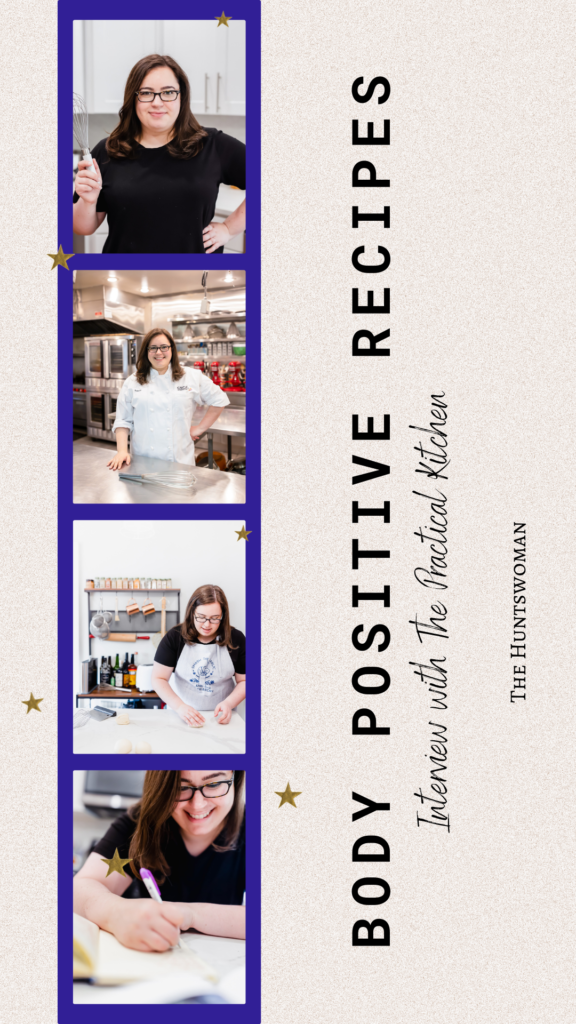
BH: I love this BTS info. What has surprised you about being a fat-positive recipe blogger?
RE: How much work goes into it.
Look, I’ve worked in media for almost a decade, it’s not like I was unaware of the work it would take to create a successful publication. But working in media you are usually sharing a lot of this work across people who are experts in specific areas.
As a food blogger you have to be an expert in:
- Recipe development
- Food photography
- Food styling
- Photo editing
- Web development
- Social media marketing
- Business strategy
- Search engine optimization
- So much more.
It’s the same for any blogger, but the added tasks of cooking/baking/cleaning up food really just adds a lot of work to the process.
BH: Sounds like a lot of hard work – and dishes! Have you thought about writing your own cookbook? One with body positive recipes?
RE: I have! I don’t have any plans at the moment, just because I don’t have the time. I think it would likely be a very specific cookbook, probably something to do with bagels because I love making them, or recipes written specifically for neurodivergent brains.
Maybe both!
BH: Ok, last question! I love to co-create with folks I interview. In 2022 what brands would you love to work with?
RE: The brands I’m most interested in working with are mostly ones from places I’ve lived before or enjoy visiting — California, Maryland, New England, and Pennsylvania. In my daily cooking and baking I gravitate towards brands with high quality, affordable, often locally sourced or locally produced ingredients, but that are still accessible in most grocery stores or affordably online.
So I’m particularly interested in working with brands like California Olive Oil, Spicewalla, Cabot Cheese, Hood Dairy, Vermont Creamery, Ocean Spray, Old Bay, Heinz — oh, and there’s this very fun maple syrup company in Vermont called Runamok that produces a unique ~sparkly~ maple syrup that I’m a little obsessed with right now. I think it would be so fun to develop some recipes and shoot some glittery maple syrup photos.
I’ve also been exploring how to work with specific agricultural organizations like the Blueberry Council, or the Maine Potato Board. But they’re a little harder to get in touch with!
Thank you so much to Rebecca for thsi fun interview! I had a blast learning about what goes into being a food and recipe blogger.
Hang Out with Rebecca, Body Positive Food Blogger
Here are some of the places to connect with Rebbeca:
- Body Positive Food Blog – The Practical Kitchen
- Instagram [Gorgeous food photos!]
- Twitter [Fun foodie tips!]
- Facebook [For recipes in your feed!]
Plus Size Tips Every Week?!
If you want to stay up-to-date on my fashion roundups, interviews with rad plus size folks and other resources, I recommend joining my email list, here!
I’m also on Instagram and Twitter! :*
